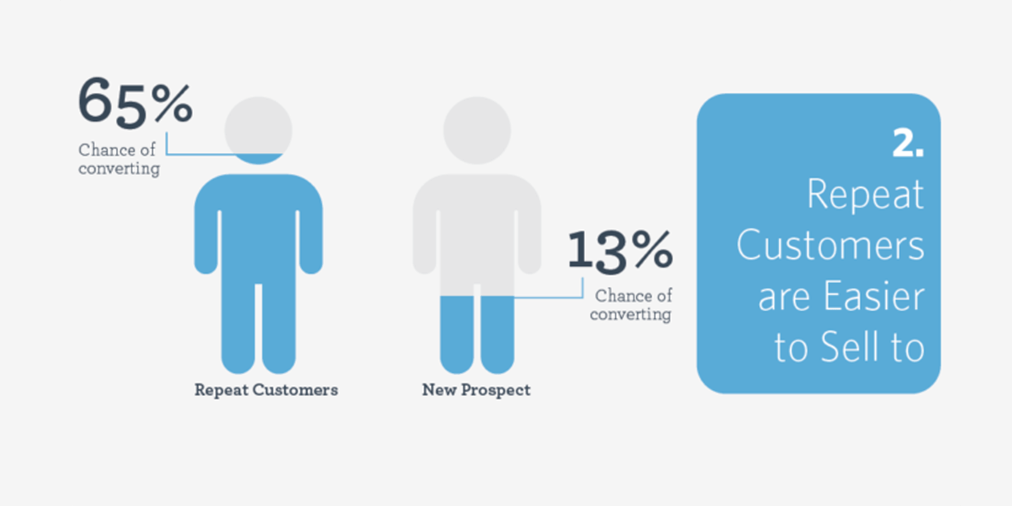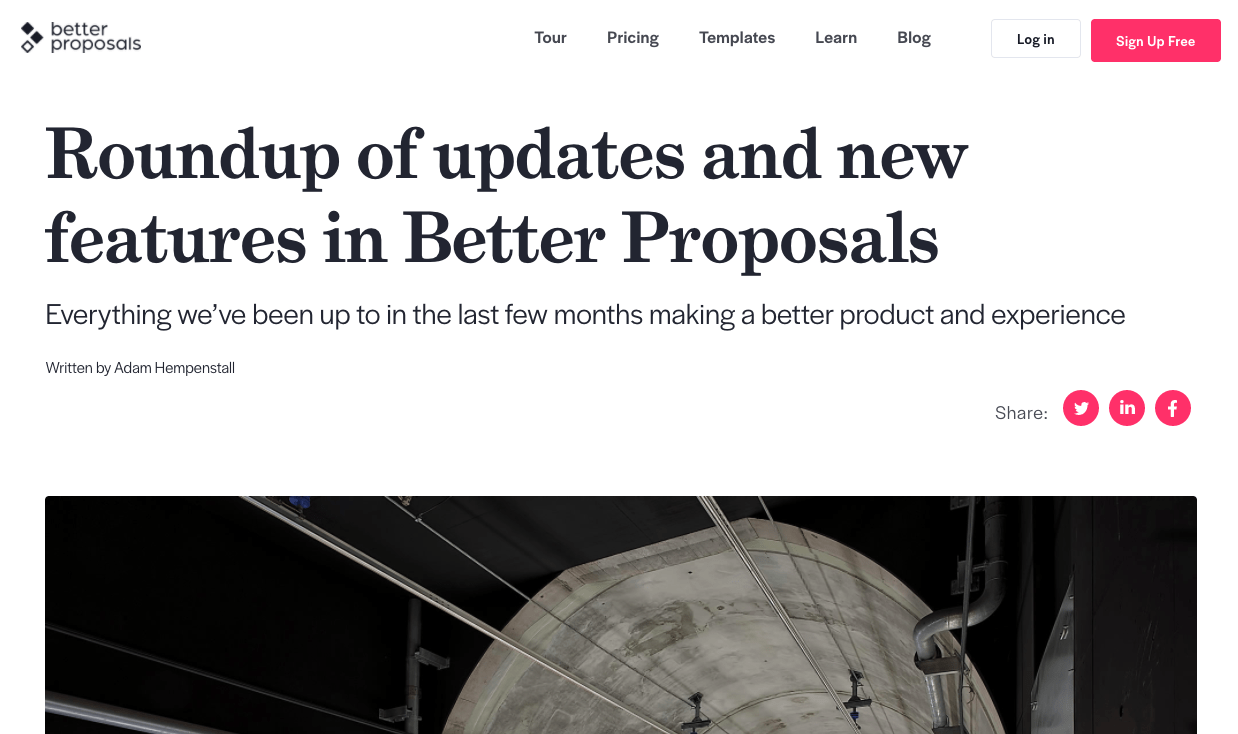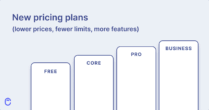Change is a natural part of life. In business, this is especially true.
Even your most loyal customer might eventually move on. This can happen for several reasons. Their needs could change, or something better could come along.
While we recognize that change is a part of business, minimizing customer churn is essential.
It’s harder to acquire a new customer than to retain existing ones. Your existing customers will spend more money than new ones because of the trust and loyalty you’ve built with them.
This creates more revenue-generating opportunities for your company.

However, simply reducing churn isn’t the whole story. You can also take advantage of customer loyalty by winning back churned customers.
Today, we’ll look at creating a win-back strategy using customer feedback. We’ll identify the key reasons for customer churn and match each with a winback campaign.
How to identify reasons for customer churn
Your first step to winning back a customer is figuring out what went wrong in the first place. The simplest way to do that is to hear from them directly. To do this, you need to gather customer feedback.
For most businesses, trends in customer churn are far more helpful than knowing the exact reason every customer dropped off the grid. Modern customer feedback tools use a public board with an upvote/downvote system to make this relatively simple.
When a piece of feedback gets a lot of upvotes, you can build a winback campaign around it.
It’s helpful to understand the different types of customer churn to figure out what strategy to use. What leads to lost customers? These are called churn factors.
Essentially, all lost customers can be placed into one of four categories:
- Their customer journey has reached its natural end: the customer needed your product for a fixed period, which has ended.
- Their needs have changed: the customer needs something different or something additional you don’t offer.
- You lost out to a competitor: somebody else offers what you offer for less money, or their product is different enough.
- The customer no longer sees value: they aren’t seeing the anticipated return on investment.
The final step is to match applicable feedback to one of these categories. You need to read between the lines here.
Let’s examine the core strategies for addressing these churn factors and winning back customers.
- THE CUSTOMER JOURNEY HAS REACHED ITS NATURAL END
This churn factor puts you in the best position. Your customers were probably happy with your product when they needed it.
However, winning them back is more complex than sitting around waiting for them to come back.
In fact, there are plenty of things you can do to grease the wheels. The good thing is you already have their email address. The critical thing is to maintain contact. You can introduce a winback email into your strategy at a certain point.
However, there are a couple of rules of thumb to remember.
For example, sending sales content to customers who don’t need your services is a surefire way to get unsubscribes. Instead, it’s vital to provide value in your email content. Here’s how.
- Use a content-driven email campaign for satisfied but lapsed customer
- Focus on content that is relevant to the broader industry rather than your specific product
- Create and share customer success stories
This final point is crucial. An excellent way to provide extra value to happy customers is to raise their profile with a case study.
2. THE CUSTOMER’S NEEDS HAVE CHANGED
The customer’s needs have changed, which is a similar churn factor to the customer’s journey reaching its natural end.
The critical difference is that the customer needs something you don’t provide. This will show up explicitly in your customer feedback. In most cases, the customer data will state that they can’t do something with your product.
When this happens, you have two winback strategies:
- Add the feature
- Demonstrate that you can achieve the same results with an existing feature
Some feature requests will be things you can reasonably add.
For example, imagine you provide an SEO tool. An active customer complains about a missing functionality in the Chrome extension. That’s something you could look into building.
If they complain that you don’t allow them to manage their social media accounts, that might not be feasible. It’s important to know when to say no to feature requests.
When you can add a feature, the next step is to inform customers of this. This really helps with customer retention. Customers will feel that the tool they’re paying for is actively improving. And they’ll be more likely to share their valuable insight with you again.
For example, Better Proposals shares every new feature with our email list. Each feature is designed to help our clients write better business proposals. The new features we share help our clients with customer acquisition. Here’s an email example.

We won’t ever win back customers who don’t need our service. But, we can bring back a churned customer if we show that we are adding features that help them achieve their goals.
3. YOU LOST OUT TO A COMPETITOR
We all know about the rational consumer. People will generally choose the cheapest product that meets their needs. We’re wired to maximize value and minimize costs.
Unfortunately, you’ll lose customers when someone can offer the same product or service as you do for less. This can be a hard churn factor to overcome.
Essentially, you have two levers to pull. When customers choose between you and your competitor, they perform a cost/benefit calculation.
To win, you have to shift this balance by lowering costs or increasing benefits.
There are several other ways you can win in your customers’ eyes.
- Offer targeted discounts or a special offer. For instance, you can charge a lower price for customers who only need specific features.
- Focus on intangible benefits. Often, you can’t beat your larger competitors on price. However, you can still beat them on things like personalization, customer service, and industry-specific knowledge.
- Lean on partnerships. Sometimes, a lost customer goes to a large competitor who offers multiple services. An excellent way to overcome this is to partner with other companies with intersecting audiences. You can then create a combined offering.
4. THE CUSTOMER NO LONGER SEES VALUE
One of the most common churn factors is customers not getting the value they need.
This can happen for two reasons:
- Your product wasn’t right for them
- They don’t know how to make the most of it
You can identify the root cause through customer feedback.
- A customer wants your product to do something it isn’t designed to do = wrong initial expectations
- A customer complains your product can’t do something, but it actually can = the user doesn’t know how to maximize the value and needs more customer service
This all comes down to education.
Here are some ideas to reduce churn and win back lost customers.
- Customer success teams can run webinars and demos to onboard customers
- Marketing can:
- Create industry-specific how-to guides to maximize customer engagement
- Publish customer success stories to show how others have benefited from your product
- Use ebooks and whitepapers on industry trends to help put your product in context
Try some of these methods to see what improves customer satisfaction the most. Each audience is unique, so experiment to see what’s best for yours.
Don’t overlook the importance of winning back customers
Winning back customers is a shockingly overlooked growth strategy. The focus is often on eliminating churn, but having a win-back strategy is just as important.
This is impossible without valuable insights from customer feedback.
That’s because you need feedback to identify your core churn factors. That is, you won’t know why customers jump ship.
When you understand why customers churn, winning back customers gets easier. Try some of these strategies today!






